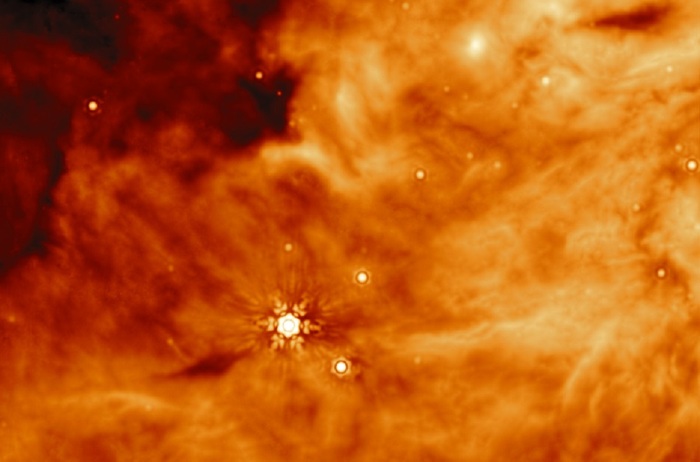Building blocks of life discovered in space: Japanese researchers find amino acids in asteroids
Created: 06/15/2022, 17:08
By: Theresa Kuchler
It is an important find: Japanese researchers have discovered amino acids in an asteroid.
© picture alliance/dpa/NASA |
NASA
Japanese researchers have discovered amino acids in an asteroid.
This means that the extraterrestrial objects contain fundamental building blocks of life.
Tokyo – Something like life slumbers in the asteroid Ryugu.
Scientists have examined it closely over the past few years and have identified more than 20 types of amino acids.
The Japanese news agency Kyodo reported on the find on Monday (June 13).
She referred to the Ministry of Science in Tokyo.
Samples of the asteroid came back to earth after six years in space with the Japanese space probe "Hayabusa 2".
When the Progen capsule landed in December 2020, it had traveled more than five billion kilometers.
The aim of the mission is to get a closer look at the origins of the solar system and life on earth.
Discovery of life building blocks in space: Researchers find amino acids in asteroids
"Hayabusa 2" was launched in Japan in December 2014 and after almost four years it reached its destination some 300 million kilometers away: the probe landed on Ryugu.
There she collected samples from the surface as well as from an area below the surface.
The Japanese space probe "Hayabusa 2" traveled in space for years.
She collected samples from the asteroid Ryugu.
© JAXA/dpa/Archive
Ryugu is one of the highly carbonaceous asteroids.
It comes from the outer part of the asteroid belt that orbits the sun between Mars and Jupiter.
In 2010, the predecessor probe "Hayabusa" (peregrine falcon) brought soil samples from an asteroid to earth for the first time worldwide.
The Hayabusa 2 spacecraft brought samples of the asteroid back to Earth
The German Aerospace Center (DLR) was also involved in the Hayabusa 2 mission with the Mascot lander.
DLR developed it together with the French space agency CNES.
In October 2018 he landed on Ryugu and explored the asteroid until the battery died.
In Japan, the individual components of the samples from the asteroid Ryugu were first curated and described.
The 4.6 billion year old material dates from the early days of the solar system.
Microscopic, mineralogical and geochemical investigations began last year.
The Japanese space agency Jaxa is also making some of the samples available to researchers from other countries.
Simple, single-celled life is believed to have existed on Earth as early as 3.9 billion years ago - almost immediately, when the Earth was cool enough for liquid water to surface.
How could life arise so quickly?
This question has occupied researchers for a long time.
also read
Pilot disappears into the toilet: EasyJet machine has to make an emergency landing
Researchers spot 'scary' space object near Earth: 'There's nothing in the sky that does something like that'
Amino acids in asteroids: Only shortly before, researchers made a special discovery in meteorites
Only recently was it reported that a research team from Japan and the USA was able to detect so-called nucleobases in three meteorites - important building blocks for the genetic material DNA.
Presumably, these complex molecules were created in space before the formation of the solar system.
This is how the scientists explained it in the journal “Nature Communications”.
It has long been known that many organic substances can form in space.
Amino acids and sugar molecules have been detected in gas clouds and in meteorites that have fallen to earth.
This strengthens the assumption that the rapid emergence of life on earth was pushed by an influx of life building blocks from space.
By the way: The first image of a black hole in the Milky Way was recently published.
(kuc/dpa)




/cloudfront-eu-central-1.images.arcpublishing.com/prisa/TQ73US57UFGWTIXR7C3BS2OTIA.jpg)




